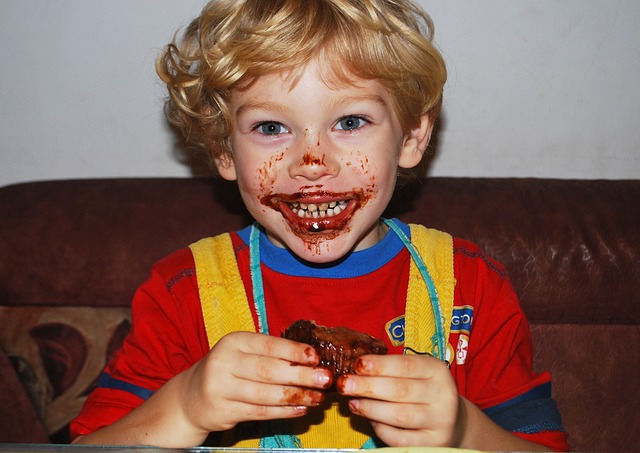 As you approach the doorway, a headless Pokemon (Pika Pika! Pi-Ka-Chu!) flies out of a window and lands at your feet. Adrian takes a break from his potty break to greet you. Oops, sorry about your shoes… and your leg. Jake whirls by you on a Razor scooter, through the front door and onto the back porch, where he sings a surprisingly good rendition of “Burning Down the House.” Alex tries to accompany him with what’s left of smashed ukulele.
As you approach the doorway, a headless Pokemon (Pika Pika! Pi-Ka-Chu!) flies out of a window and lands at your feet. Adrian takes a break from his potty break to greet you. Oops, sorry about your shoes… and your leg. Jake whirls by you on a Razor scooter, through the front door and onto the back porch, where he sings a surprisingly good rendition of “Burning Down the House.” Alex tries to accompany him with what’s left of smashed ukulele.
“Sorry,” he says, as he hands me the pieces and runs off. We have … had a ukulele?
Dressed in makeshift togas, Lauren and Caitlin run by with their Rapid Shoot Super Soaker Water Guns cocked, ready to take down Koss and Jared.
“No water in the house,” I shout, without the slightest delusion that anyone is listening to me. Welcome to my son’s 8th birthday party.
When I let Koss pick the theme for his party, I expected him to choose Pokemon, Sponge Bob, or Harry Potter. You know, a commercially exploitable theme that would be easy to incorporate into invitations, piñata, decorations, games, craft projects, band-aids, snacks, cake, favors, little gift bags, ribbons, tags, stickers and candy for the little gift bags.
I got Animal House instead.
Luckily, I lived in a frat house one summer a million years ago. Otherwise I would have been completely unprepared for what happens in a home invasion by seven kids with enough adrenaline to power Bolivia, Kamchatka, and Yakutsk (and that’s before the ice cream sundaes).
Many moms believe that planning a child’s birthday party requires as much tactical planning as invading a small country, more if you have to hire a magician. Since my son’s birthday is right in the middle of the summer, I tend to be a little more laid back.
OK, a lot more laid back. I let my son plan his own party. He had grand plans from the get go. A wild game of Cranium, a water gun fight, and a dance contest. It sounds pretty harmless, right?
I figured it couldn’t be any worse than letting my husband plan the party, which would have involved a few bags of chips, a couple of pizzas and a lot of beer. All serve yourself, of course.
After all, there has to be some advantage to living in the Shack besides a good school district. I finally figured it out. This is a great house for a frat party. There’s almost nothing here that I really care if they thrash. The furniture is old and falling apart, the carpet is disgusting, the yard is full of weeds, and the walls have seen better days.
So this year we decided to bite the bullet and let our son have his dream party. Did I mention he wanted a slumber party?
Not only did we let them thrash our house, and play with fire, we let them stay here and sleep it off afterward.
I use that word, “sleep” in a very loose way. I think at about 3 a.m. a few of them were sitting down. That counts, right?
It’s been almost a week, and our birthday hangovers are still hanging on. My kitchen’s recovered from the food fight, and my headache has almost gone away, but I’m still scrubbing the walls from the home invasion.
I mean this literally.
One of the more ingenious games they played was “Burglar,” which involved repeatedly climbing through the window from the front porch into the living room, throwing throw pillows, stereo equipment and knickknacks into a bag and running through the neighborhood shouting, “Have you seen Delta House?”
It’s listed under my name in the phone book.
==
Regale us with your birthday party tales by sending an email to Leslie@LeslieDinaberg.com. For more of Leslie’s columns visit www.LeslieDinaberg.com.
Originally appeared in the Santa Barbara Daily Sound on August 3, 2007.


![By wikipedia:en:user:Sotakeit (w:Image:Cursive.JPG) [Public domain or Public domain], via Wikimedia Commons](https://lesliedinaberg.com/wordpress/wp-content/uploads/2007/01/512px-Cursive-300x205.png)
